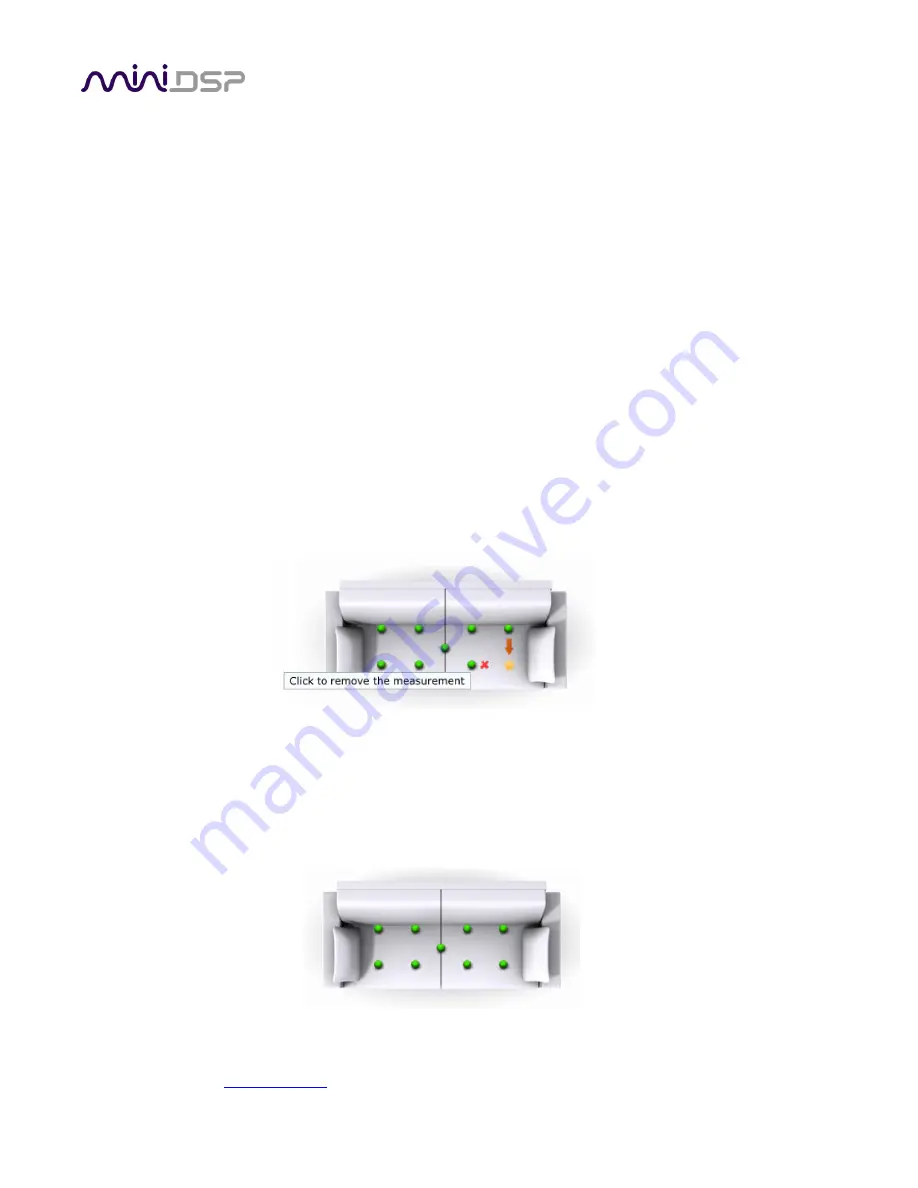
PRELIMINARY
miniDSP Ltd, Hong Kong /
www.minidsp.com
/ Features and specifications subject to change without prior notice
45
After the sweeps finish, the status bar will update with a progress indicator while DLCT performs calculations on
the measurement. If the measurement was successfully captured, the red arrow marker will advance to the next
location to be measured. Move the microphone accordingly and press Start again to run the next measurement.
5.6.4
If you receive an error
If the program indicates that the measurement was not successful, you will need to take corrective action. The
most common errors are related to signal level:
•
The measurement signal is too low to ensure a clean capture.
•
The measurement signal is too high and the audio signal has exceeded the maximum level (clipping). This is
shown in red on the signal graph.
In either case, go back to the
Output & Levels
tab and adjust
Output volume
,
Input gain
, or the
Channel volume
slider for the channel that caused the problem. Then re-run the measurement. (You do not need to redo the
measurements you have already successfully completed.)
5.6.5
Viewing and redoing measurements
Click on the green dot for any completed measurement to display its measured time-domain response graph.
After clicking on a green dot, a small red “X” will appear next it. Click on the “X” to delete the measurement. The
status bar will indicate that the program is recalculating parameters.
To redo a measurement, delete it, move the microphone to the appropriate location, and click on
Start
. Note: if
more than one measurement is deleted, the marker will move to the lowest-numbered one.
5.6.6
Completing the measurements
Once all nine measurements have been successfully completed, all locations will be marked in green. Click the
Proceed
button to go the Filters screen.






























